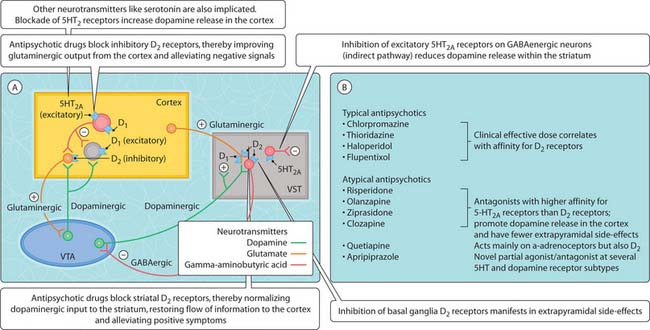37 Antipsychotic drugs and schizophrenia
Clinically, schizophrenia is characterized by hallucination and delusion (positive symptoms); apathy, unwillingness to socialize (negative symptoms); and cognitive deficits (lack of attention, decrease in memory). The finding that amphetamine could induce psychotic-like behaviour by stimulating dopamine release in the striatum and the beneficial effect of dopamine D2 receptor antagonists in the treatment of this disease led to the proposal that schizophrenia results from an imbalance in dopaminergic neurotransmission (Fig. 3.37.1). However, it is appreciated that this disease is more complex and at a neurological level possibly related to a failure by dopaminergic, glutaminergic and GABAergic neurons to coordinate pyramidal firing patterns. Neuroimaging studies have revealed abnormal activity in the prefrontal cortex and increased (striatum) and reduced (cortex) dopaminergic activity. Therefore, the drugs used to treat this condition target dopamine and 5HT receptors, which helps to normalize glutaminergic and dopaminergic neurotransmission in schizophrenia.
Antipsychotic drugs are considered as two groups: the classical or typical drugs and the more recently developed atypical drugs (Fig. 3.37.1). The division is not clearly defined but relates to receptor profile, incidence of side-effects and efficacy in treating negative symptoms. Many antipyschotic drugs have:
< div class='tao-gold-member'>









